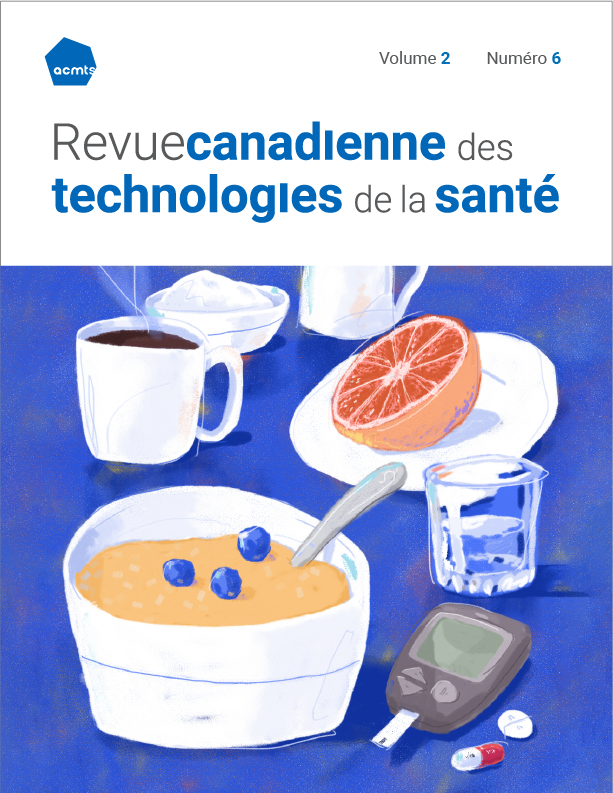Examens d’une technologie de la santé
L’utilisation des produits biologiques d’ancienne et de nouvelle génération contre le psoriasis en plaques parmi les payeurs publics et privés au Canada
Messages clés
- Question : D’après de récents examens de technologies de la santé réalisés par l’ACMTS, notamment une analyse de l’environnement (lien en anglais) d’envergure nationale portant sur les produits biologiques contre le psoriasis en plaques parmi les régimes d’assurance médicaments publics et un examen (lien en anglais) des données probantes cliniques concernant l’efficacité comparative de médicaments biologiques contre le psoriasis en plaques, l’utilisation appropriée des produits biologiques dans le traitement du psoriasis en plaques pourrait consister à privilégier les produits de nouvelle génération (soit les inhibiteurs de l’interleukine [IL] 17 et de l’IL-23) plutôt que les produits d’ancienne génération (soit les inhibiteurs du facteur de nécrose tumorale [TNF], et les inhibiteurs des IL-12/23). Plus précisément, ces examens en sont venus aux constatations ci-dessous :
- Les produits biologiques de nouvelle génération contre le psoriasis en plaques s’avèrent systématiquement plus efficaces que les produits d’ancienne génération dans des essais comparatifs récents (p. ex. essais AMAGINE-2 et AMAGINE−3, FIXTURE, IMMvent, NAVIGATE, UltIMMA-1 et UltIMMA−2, UNCOVER-2 et UNCOVER-3, ainsi que VOYAGE-1 et VOYAGE−2).
- Les produits biologiques d’ancienne génération ont pour la plupart été inscrits aux listes des médicaments assurés avant l’instauration du processus d’ententes avec l’Alliance pancanadienne pharmaceutique (APP); il est donc probable que moins d’ententes d’inscription aient été conclues avec les payeurs publics pour ces produits, alors que tous les produits de nouvelle génération ont fait l’objet de négociations par l’APP. Pour ce qui est des listes des payeurs privés, les ententes d’inscription ne sont pas publiques; toutefois, d’après l’Association canadienne des compagnies d’assurances de personnes inc. (ACCAP), il est probable que des ententes aient été conclues.
- Pour les produits biologiques d’ancienne génération, la période d’exclusivité (soit la durée pendant laquelle un médicament biologique d’origine est protégé de la concurrence des biosimilaires) est expirée, alors que tous les produits de nouvelle génération sont actuellement protégés.
- Approche : Nous avons réalisé une étude d’utilisation nationale afin d’évaluer les habitudes d’utilisation des produits biologiques d’ancienne et de nouvelle génération contre le psoriasis en plaques parmi les payeurs publics (à l’aide de données de l’Institut canadien d’information sur la santé [ICIS]) et parmi les payeurs publics (à l’aide de données de Reformulary et de l’ACCAP), les habitudes de prescription (parts de marché et couts moyens) des deux générations de produits chez les assureurs publics et privés pour les usagers nouveaux et actuels, ainsi que les dépenses (excluant les ententes d’inscription) par les payeurs publics et privés en médicaments biologiques contre le psoriasis en plaques après la perte de l’exclusivité.
- Constatations
- Bien que les produits biologiques de nouvelle génération contre le psoriasis en plaques aient une efficacité supérieure, au Canada, environ 44 % des patients qui ont commencé à prendre un produit biologique remboursé par un régime d’assurance public ou privé se sont vu prescrire un produit d’ancienne génération en 2020.
- Pour les payeurs publics, le cout annuel moyen par nouveau patient est généralement plus élevé pour un produit biologique d’origine d’ancienne génération (étendue = de 11 645 $ à 16 047 $) que pour un produit de nouvelle génération (étendue = 8 303 $ à 15 229 $). L’ustékinumab est associé au cout estimé le plus élevé chez les nouveaux patients couverts par des régimes d’assurance médicaments publics et, bien que la période d’exclusivité de ce médicament soit échue, il n’y a pas encore d’option biosimilaire sur le marché.
- Les contribuables canadiens (dépenses publiques et privées en médicaments) ont payé entre 2016 et 2020 près de 9 milliards de dollars (dépenses brutes) pour toutes les réclamations portant sur des produits biologiques d’origine contre le psoriasis en plaques dont la période d’exclusivité est échue. Pour mettre les choses en perspective, d’après une analyse de données tirées du Système national d’information sur l’utilisation des médicaments prescrits (SNIUMP), au Canada, les dépenses en anticancéreux ont été de 3,9 milliards de dollars en 2019 (derniers chiffres disponibles), et les 50 médicaments représentant les plus grandes dépenses ont couté 4,3 milliards de dollars dans l’exercice 2019-2020.
- Répercussions pour les responsables des politiques : Comme les produits biologiques de nouvelle génération pourraient offrir une meilleure efficacité à des couts inférieurs, les payeurs devraient envisager de promouvoir l’utilisation appropriée des produits biologiques contre le psoriasis en plaques.

